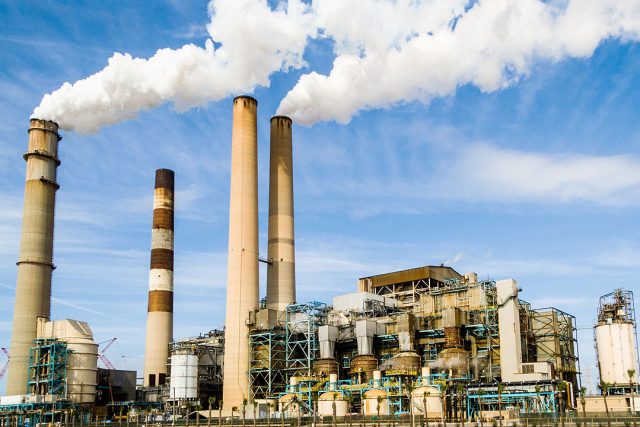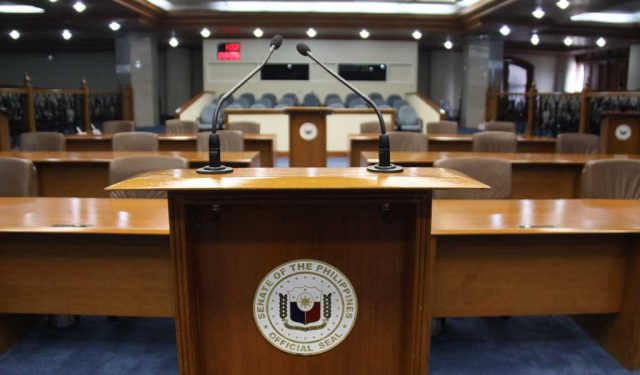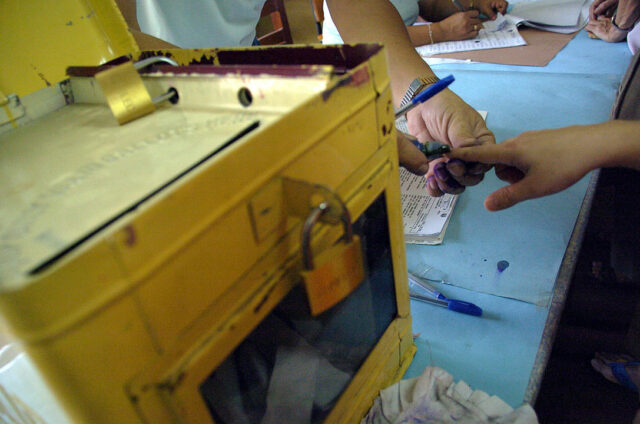SENATE President Francis “Chiz” G. Escudero on Thursday said that he is looking to retain the Senate’s Rules of Impeachment for the upcoming trial of Vice-President Sara Duterte-Carpio.
Mr. Escudero said there were proposals from the legal team and various senators during the congressional recess to change the rules.
“The direction I am personally taking right now is to suggest to the impeachment court not to change the rules because the Senate and the institution of the Senate might be accused of changing the rules in the middle of the game to favor one side or the other,” the Senate chief said in a media briefing, in mixed Filipino and English.
Mr. Escudero added that he will propose that any changes in the impeachment rules should be applied to future impeachment cases.
He said that his proposal is still subject to the approval of the Senator Judges that will be sworn-in once Congress resumes in June.
“We can still discuss them, but they will be prospectively applicable to future impeachment complaints that will be discussed by the Senate and not to the current impeachment that we are facing right now,” he added.
Mr. Escudero also called on newly elected and re-elected Senators to refrain from giving out their positions regarding the upcoming impeachment trial.
“According to the rules, they should avoid giving out their categorical position regarding this until the trial has begun and they have not seen any evidence in favor or against the defendant,” he added.
Congress, which went on a nearly four-month long break on Feb. 8 for the midterm elections, is set to resume on June 2-13.
Asked on how Duterte-backed candidates will affect the impeachment trial, Mr. Escudero said that endorsed candidates are still likely to turn their backs on those that have endorsed them.
“If I base it on history, and not just in a specific senator but on the political history of our country, we have seen that alliances change,” he added.
Unofficial election tallies showed that only six senatorial candidates backed by President Ferdinand R. Marcos, Jr. secured seats during the May 12 elections.
“The level of readiness of the Senate is higher, including the invitations, the ID, the security preparations, the holding areas of the prosecution, the defense panel, even down to the details of their parking, we have prepared, and we are ready,” he added.
Senator Judges are expected to take oath in June where they are expected to discuss Ms. Duterte’s charges and the Rules of Impeachment. The Vice-President is expected to face the Senate as an impeachment court once her trial commences in July.
Newly elected lawmakers will take their oaths once the 20th congress begins in July, coinciding with the President’s State of the Nation Address.
The House impeached the Vice-President on Feb. 5, alleging secret fund misuse, unexplained wealth, acts of destabilization and plotting the assassination of Mr. Marcos, his family, and the Speaker of the House. Ms. Duterte has denied any wrongdoing.
The impeachment complaint was filed and signed by more than 200 congressmen, meeting more than the one-third legal requirement before it could be sent to the Senate.
NEW PROSECUTORS
Meanwhile, a congressman on Thursday said the inclusion of two newly minted lawmakers in the House of Representatives’ prosecution team for Ms. Duterte’s impeachment trial could bolster the case against her.
House Speaker Ferdinand Martin G. Romualdez on Wednesday confirmed the addition of ex-Senator Leila M. de Lima and human rights lawyer Jose Manuel Tadeo “Chel” I. Diokno in the prosecution team that will argue for Ms. Duterte’s ouster at the Senate.
“It’s not just about adding members to the team; we’ve gained two voices that have long fought for human rights and the rule of law,” House Deputy Majority Leader and La Union Rep. Francisco Paolo P. Ortega V. said in a statement.
“Their presence assures the public that the proceedings will be grounded in legal merit and Constitutional fidelity,” he added.
A former Justice secretary, Ms. de Lima has secured a seat as the representative of the Mamamayang Liberal party-list in the May 12 elections, marking her return to public office after a series of political and legal challenges during the Duterte administration.
Meanwhile, Mr. Diokno ran as a nominee of Akbayan party-list, which is expected to have three seats in the 20th Congress. He is chairman of the Free Legal Assistance Group and served as dean of the De La Salle University’s college of law.
“They are true icons of justice, so their decision to join the House prosecution is significant,” said Mr. Ortega. “This reflects the kind of leaders we want at the forefront — those who have dedicated their lives to defending the Constitution.”
The Marcoses are currently entangled in a deepening political feud with the Dutertes that culminated in the Vice-President’s impeachment at the House. Ms. Duterte had emerged as a frontrunner for the 2028 presidential election, but her trial before the impeachment court could possibly bar her from holding public office permanently. — Adrian H. Halili and Kenneth Christiane L. Basilio













